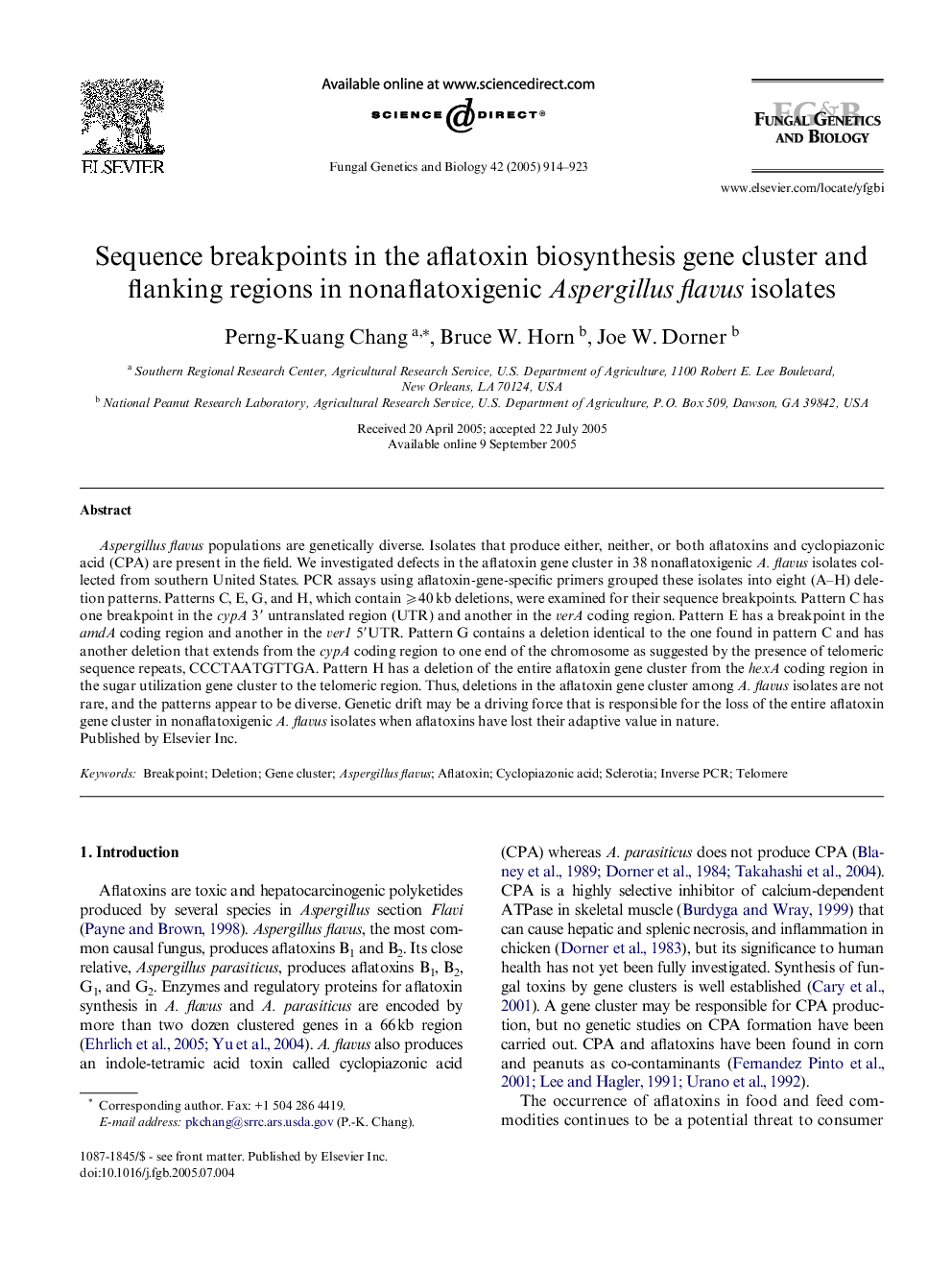| Article ID | Journal | Published Year | Pages | File Type |
|---|---|---|---|---|
| 10939683 | Fungal Genetics and Biology | 2005 | 10 Pages |
Abstract
Aspergillus flavus populations are genetically diverse. Isolates that produce either, neither, or both aflatoxins and cyclopiazonic acid (CPA) are present in the field. We investigated defects in the aflatoxin gene cluster in 38 nonaflatoxigenic A. flavus isolates collected from southern United States. PCR assays using aflatoxin-gene-specific primers grouped these isolates into eight (A-H) deletion patterns. Patterns C, E, G, and H, which contain ⩾40 kb deletions, were examined for their sequence breakpoints. Pattern C has one breakpoint in the cypA 3â² untranslated region (UTR) and another in the verA coding region. Pattern E has a breakpoint in the amdA coding region and another in the ver1 5â²UTR. Pattern G contains a deletion identical to the one found in pattern C and has another deletion that extends from the cypA coding region to one end of the chromosome as suggested by the presence of telomeric sequence repeats, CCCTAATGTTGA. Pattern H has a deletion of the entire aflatoxin gene cluster from the hexA coding region in the sugar utilization gene cluster to the telomeric region. Thus, deletions in the aflatoxin gene cluster among A. flavus isolates are not rare, and the patterns appear to be diverse. Genetic drift may be a driving force that is responsible for the loss of the entire aflatoxin gene cluster in nonaflatoxigenic A. flavus isolates when aflatoxins have lost their adaptive value in nature.
Keywords
Related Topics
Life Sciences
Biochemistry, Genetics and Molecular Biology
Cell Biology
Authors
Perng-Kuang Chang, Bruce W. Horn, Joe W. Dorner,
